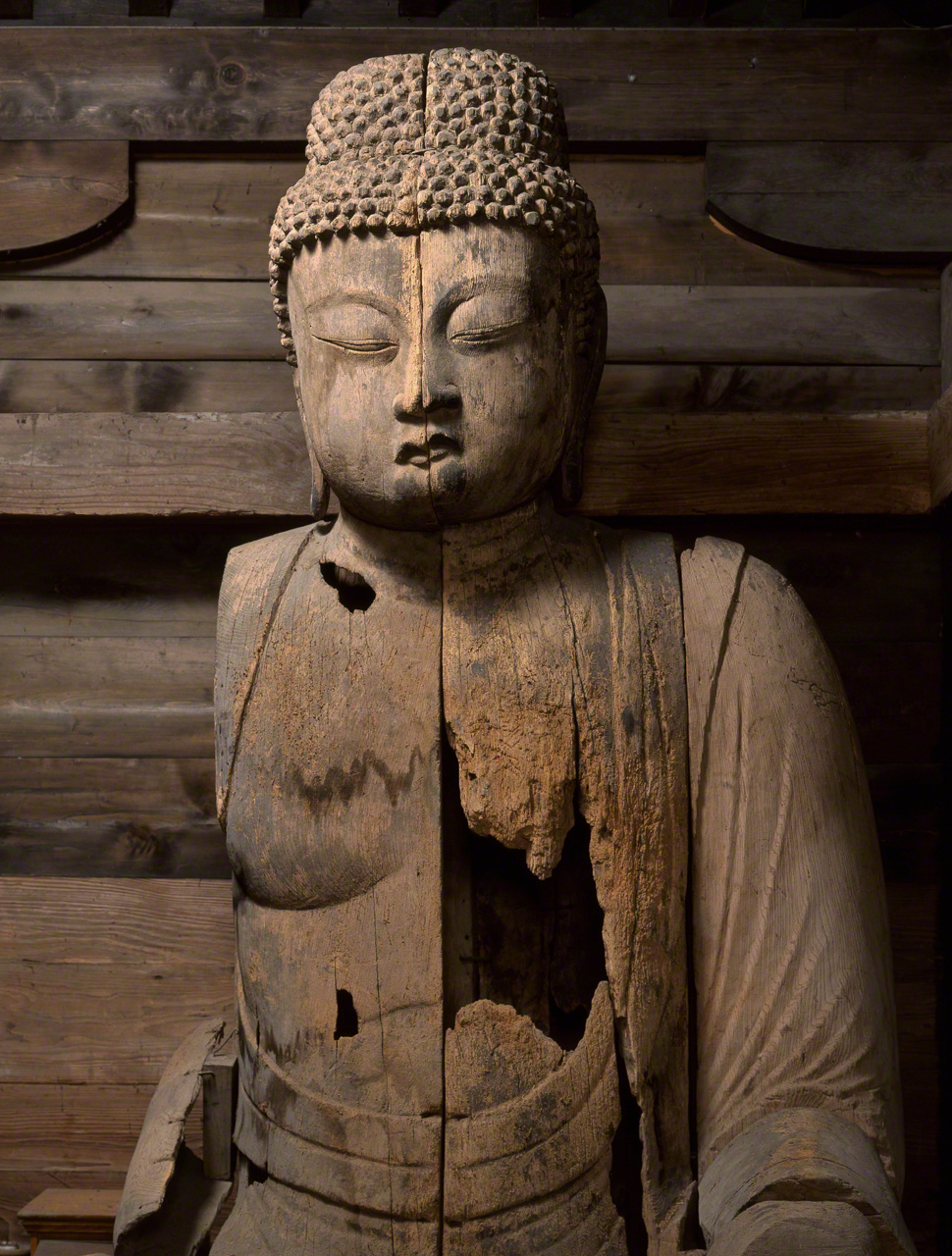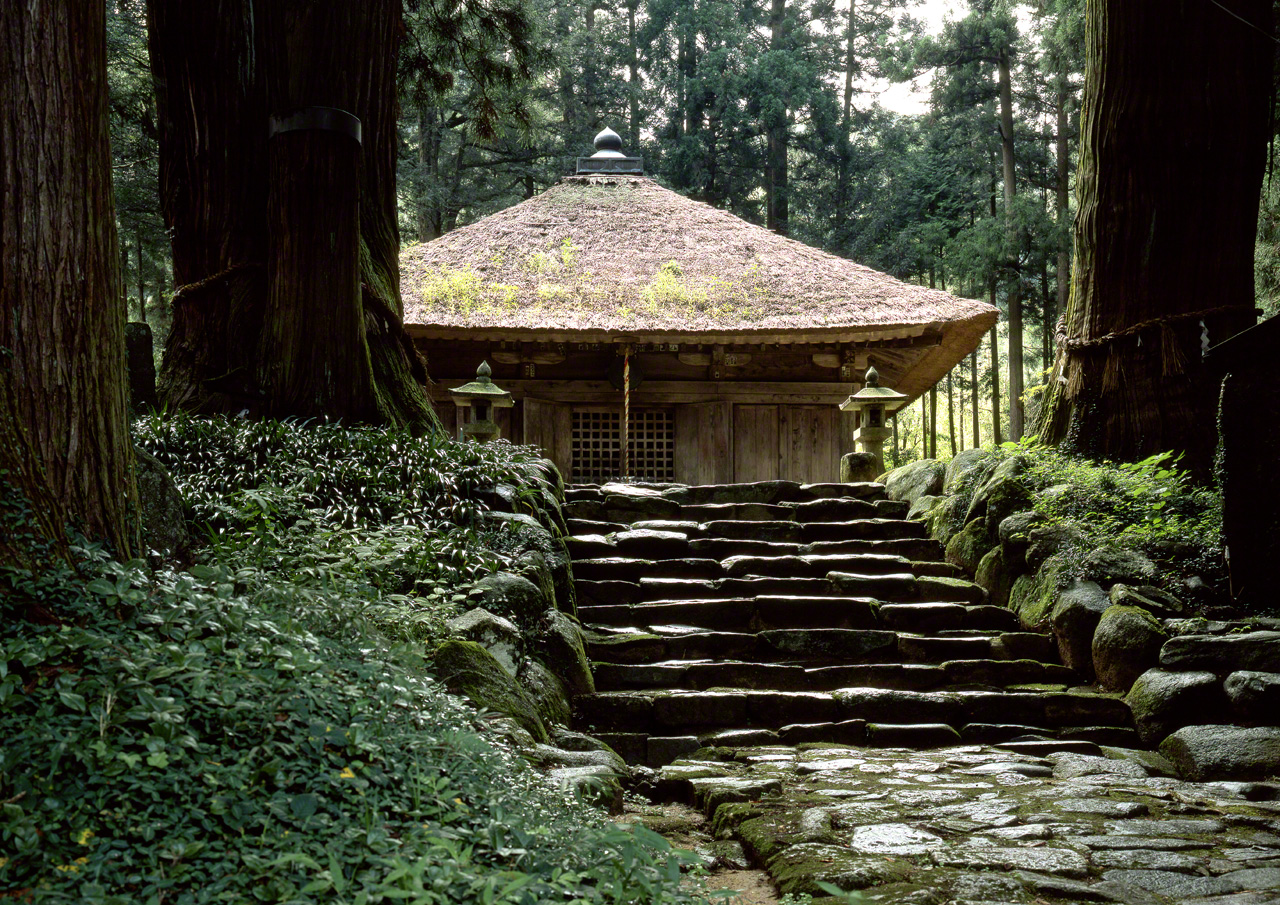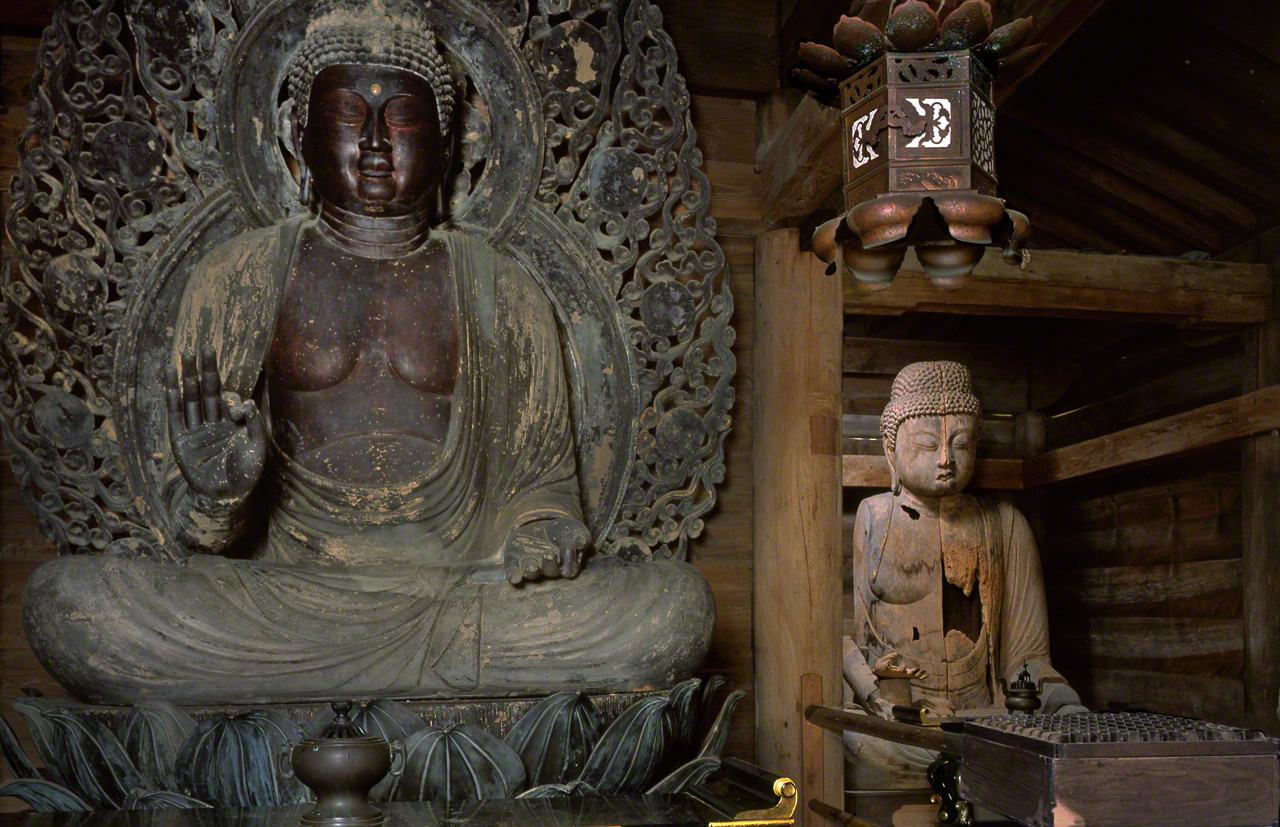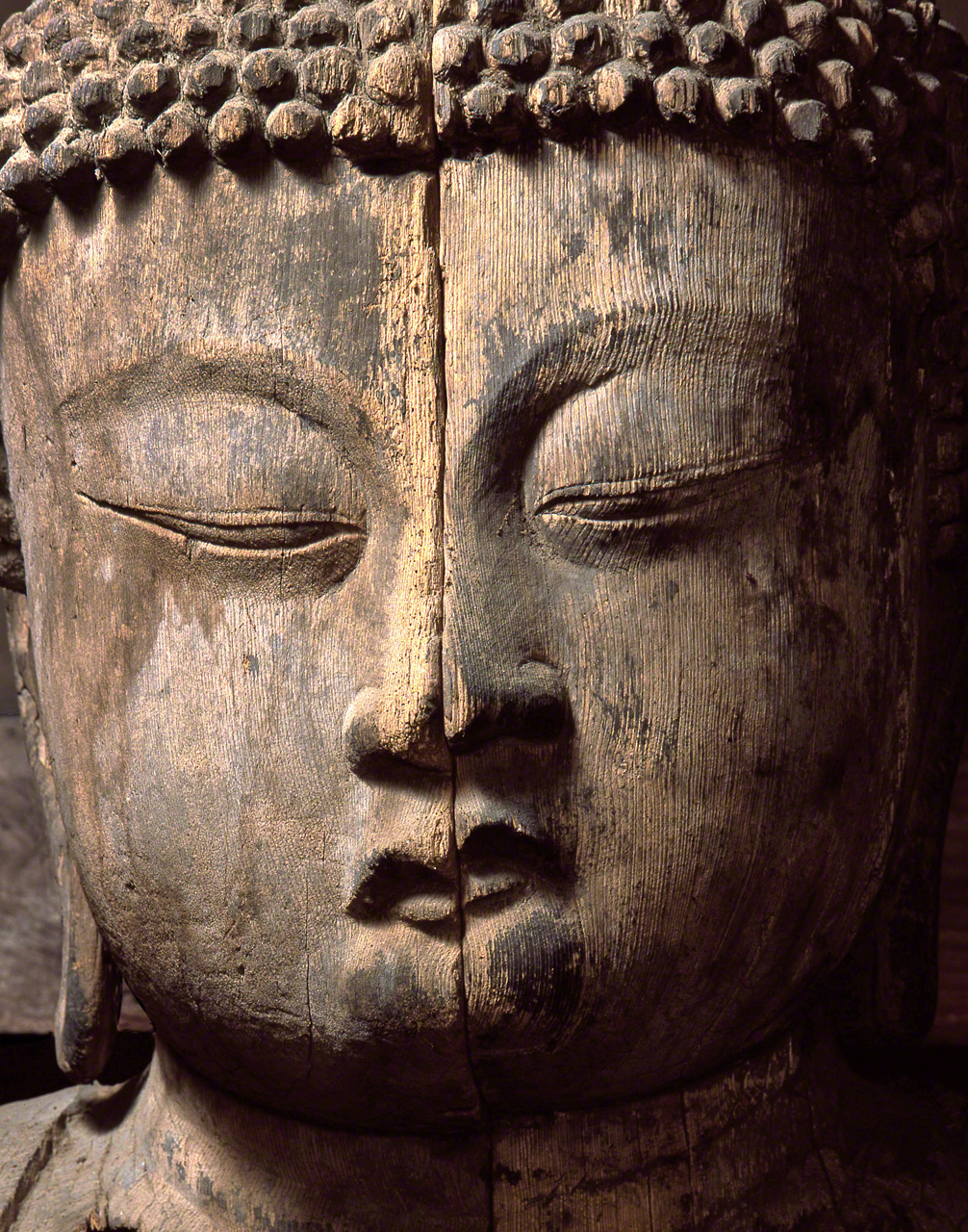
Seated Image of Amida Buddha, Kōzōji, Miyagi
Images Culture History- English
- 日本語
- 简体字
- 繁體字
- Français
- Español
- العربية
- Русский
Noble features, deep in silent meditation, inspire a sense of yearning for the Pure Land.
The face belongs to a damaged statue in the Amida Hall at Kōzōji, one of the oldest temples in Miyagi Prefecture. Although the statue has lost its right arm, its basic form remains mostly intact—despite a painful-looking gash in the torso, as if someone has ripped the heart out of the chest. In spite of everything, the Buddha continues serenely to beckon suffering beings toward the bliss of his Pure Land paradise.

(© Muda Tomohiro)
According to tradition, the temple Kōzōji, located in Kakuda in Miyagi Prefecture, was founded in 819. The Amida Hall is said to have been built in 1177 by the wife of Fujiwara Hidehira, the third ruler of the Northern Fujiwara, who led the clan to the height of its cultural glory. A small structure with a thatched pyramidal roof, the hall is regarded as one of the three most important Amida Halls in the Tōhoku region, together with the UNESCO-listed Konjikidō at Chūsonji (at Hiraizumi in Iwate Prefecture) and the Shiramizu Amida Hall (Iwaki, Fukushima Prefecture).

The Amida Hall. (© Muda Tomohiro)
In the center of the hall is the main image, a 2.7-meter seated statue of Amida Buddha. Sculpted in the Japanese style (wayō), this image, an important cultural property, dates from the late Heian period (794–1185), when Japanese Buddhist sculptors began to move away from Chinese models to develop their own distinctive expressive techniques. Although the image itself is 2.7 meters tall, the halo behind the Buddha reaches almost to the ceiling, giving a total height of more than 5 meters.

Two seated sculptures of Amida: the main image (on the left) with the damaged “old image” in the background. (© Muda Tomohiro)
Ordinarily, you might expect a photographer to focus on this main image, especially one that has been designated an important cultural property. But Muda Tomohiro found himself mysteriously drawn to the “aura” emanating from the timeworn sculpture in the shadows to the right. Now badly damaged, this sculpture is the same height as the main image, at 2.7 meters. It was made using the yosegi method, in which a statue is made from two or more pieces of wood, as can be seen clearly today from the straight line that dissects the damaged part of the sculpture.
Now that the grain of the wood is exposed, it is unclear what kind of coloring the sculpture might originally have had. But the small snail-shaped spirals of hair (rahotsu) and the well-proportioned eyes and lips make it likely that the statue was made in the Fujiwara (late Heian) period, around the same time as the main image. The graceful features of the sculpture are reminiscent of the seated statue of Amida at Chūsonji in Hiraizumi, another masterpiece from the same period.
One theory is that this damaged Buddha was originally the main image here. Pondering that possibility brings home how remarkable it is that so much of the statue’s original form still survives, despite all the upheavals that have taken place over the course of the temple’s long history. Perhaps it was this resilience in the face of time that resonated with Muda Tomohiro. The image is registered as a Kakuda municipal cultural property, the “seated wooden image of the Amida Buddha (older statue),” and this is also the official name used at the temple.
The hall’s main image was damaged in the earthquake and tsunami that devastated Tōhoku in 2011, and underwent four years of repair and restoration work starting in April 2016. The picture here shows the image before restoration. Today, it has been brought back to a more pristine state, making the contrast with the damaged and timeworn “old image” starker than ever. If you visit the temple, I hope you will take the time to turn and join your hands in quiet prayer in front of this image, which carries on its damaged form the scars of time—broken, but not defeated.

(© Muda Tomohiro)
Seated Wooden Image of the Amida Buddha (Older Statue)
- Height: 2.7 meters
- Date: Heian period (794–1185)
- Kōzōji (Kakuda, Miyagi Prefecture)
- Registered municipal cultural property of Kakuda
Visitors wishing to see the statue should call ahead first to confirm availability (tel. 0224-65-2038).
(Originally published in Japanese. Banner photo: Seated wooden image of the Amida Buddha at Kōzōji, Miyagi Prefecture. © Muda Tomohiro.)
